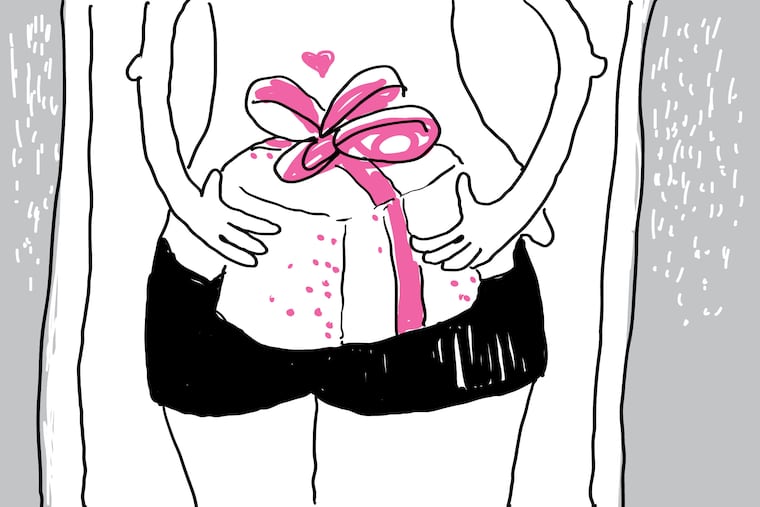How to personally deliver something (safely) during the pandemic
Travel safely and don’t come into direct contact with the recipient.

Say you bought a gift for a friend. bought groceries for your elderly neighbor. Or you have a document you need to physically get to your colleague. Or you baked a lasagna to give to a family member.
How do you do that during the pandemic?
As people have encountered this, they’ve asked us what to do. So we asked some experts, and the good news is there are some straightforward things to follow that will greatly minimize the risk of becoming infected or transmitting the coronavirus.
Here’s how to make those important deliveries as safely as possible.
Make sure it’s actually essential
Sorry, but it has to be said (again): The safest thing to do is to stay home. Delivering something should be for really important things that are worth the risk.
“This is a day and age when we don’t want to be exposing ourselves or other people unnecessarily,” said Jen Caudle, a family physician and professor at Rowan University’s School of Osteopathic Medicine. “We still need to be hunkering down, that’s very important. … Do only what you absolutely have to do. Minimize the risk for you and for other people.”
Get there safely
When making the delivery, follow the general guidelines for how to travel safely, including staying at least six feet away from other people, wearing a mask over your mouth and nose, and not touching your face.
» READ MORE: Social distancing dos and don’ts
Weigh the various options for how you’re going to travel, keeping in mind that the primary way the virus is spread is through person-to-person contact, usually from the respiratory droplets produced by coughing, sneezing, and talking.
So mailing something might be safer than taking a walk through a crowded area or having to ride transit. But solo, socially distanced travel by foot, bike, or car may be better than going to a post office. Just try to come in as little contact with others as possible.
The delivery itself should be contactless
Follow the example of delivery services and do a contactless delivery, leaving the package on someone’s steps, porch, etc. It’s totally fine for them to watch through a window or from behind a closed door, but you should drop off the item without coming into direct contact with the recipient.
“You don’t even open the door for them,” Caudle said.
When Caudle’s friend, who lives in her building, drops something off, she leaves it on the floor outside.
“I don’t go to the door and take it from her,” Caudle said. “We do not even come in contact with each other.”
» READ MORE: You should probably replace some of your fabric face masks
Also, you shouldn’t go inside someone’s home, even if you don’t come in contact with them. Don’t go into their kitchen while they stay in another room, don’t step into their foyer to drop off the bags. Entering their home increases the chances you’ll bring the virus in, such as by touching something. In a large apartment building, it’s better to leave something at the front desk than to go inside to leave something directly outside someone’s door.
It may help to have a designated area, especially if you’re concerned about theft or someone has, say, a large front porch.
Bring things inside carefully
The same way you don’t need to disinfect your groceries — please don’t bleach your broccoli — you don’t need to obsess over disinfecting whatever you’ve just received, said Thersa Sweet, an epidemiology professor at Drexel University’s Dornsife School of Public Health.
» READ MORE: How to wash vegetables: Can I get the coronavirus from groceries?
“I do not spray down my groceries when I bring them into the house, I just bring them into the house,” Sweet said. “But the first thing I do is I wash my hands vigorously. That’s going to be more important for people, is to continue to wash their hands.”
To protect against the possibility of picking up the virus, Caudle said, you can take the same steps to protect yourself as you would with normal mail or food delivery. The virus isn’t primarily spread through touching surfaces, though you can always wipe down outside packaging, throw out the boxes, and wash your hands anyway.
» READ MORE: How to minimize coronavirus risk from mail and food delivery
Washing your hands is still key no matter what you do, Caudle and Sweet said. Even if the virus does get on your hands, washing will remove it.
Don’t be a stranger
While it can feel rude or awkward to insist on a fully contactless delivery, you don’t have to be totally isolated. You can still wave and say hi, just from a distance.
Make a plan in advance to set the ground rules — so the person doesn’t come outside until you’ve moved away, for example — and arrange a time when the recipient can be there to say hello.
“Give the person a little wave,” Sweet said. “We don’t have to completely isolate in that respect.”
And then go home and wash your hands.